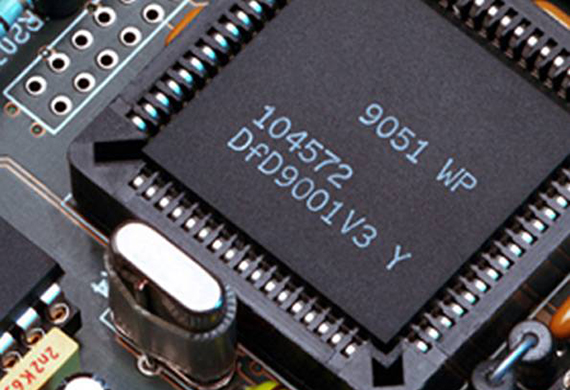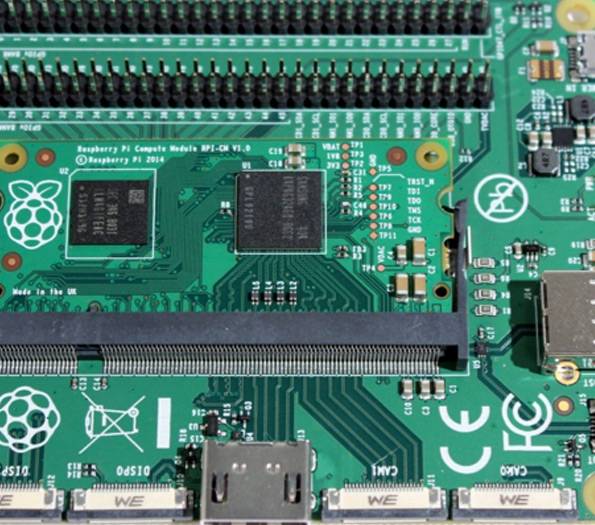A very specific example is the application of software radio (Software Radio). At present, the following main contradictions exist in the field of wireless communication: First, new communication systems and standards are constantly being proposed, the life cycle of communication products is shortened, and the development cost is rising; The interconnection requirements are becoming stronger and stronger; third, the frequency band is more crowded, requiring higher frequency band utilization and anti-interference ability. Software radio realizes wireless and personal communication functions as much as possible with software, and replaces application-specific integrated circuits with programmable general-purpose DSP chips and programmable logic devices, so that the content of special hardware in the system is reduced, and the flexibility and compatibility of system design are improved. flexibility and upgradeability. For example, the rapid development of urban construction will lead to the deterioration of wireless network characteristics. Although traditional network optimization methods can improve network performance, it is difficult to obtain satisfactory results despite spending a lot of manpower and financial resources. Using software radio technology, the performance of the wireless network can be monitored at any time, and the network can be upgraded in a timely manner to ensure the optimal performance of the network. Obviously, software radio technology needs the support of a hardware DSP chip platform with powerful digital signal processing capabilities. By running different software on the DSP chip, it supports a variety of communication systems and improves the compatibility and upgradeability of the system. It is foreseeable that DSP chips with parallel floating-point computing capabilities will replace fixed-point DSP chips to meet the requirements of high-precision, large dynamic range, large computational load, and increasingly complex data processing in the field of communications.

In addition, there are other wireless communication protocols, such as IEEE802.11, SWAP, IrDA, "Bluetooth" and other technologies that provide wireless communication for various devices such as mobile phones, notebook computers, portable information terminals, portable game machines and digital cameras. way to connect the interface.
Another notable class of wireless access technologies is WLAN. This technology connects mobile phones, PDAs and notebook computers, and uses the existing GSM network or CDMA network with excellent coverage to connect them to the Internet, providing users with narrowband data services such as email and web browsing anytime, anywhere. A large number of digital home appliances (such as MP3, network audio on-demand device, etc.) can also download information or realize remote control in this way. The main difficulty of such products is still in the performance and cost of the chip. If the low-cost integrated circuit chip cannot be solved, the large-scale promotion of the product will encounter huge difficulties.
Integrated circuits are the earliest and most widely used in wired communication equipment, such as digital program-controlled switches, optical synchronous digital network (SDH) transmission equipment, routers, conference television, and secure communications. Most of the early communication application-specific integrated circuits were customized according to the requirements of the system. After years of development, today's communication ASIC chips have begun to lead the development of communication equipment.
In terms of high-speed interfaces of communication equipment, such as frame synchronization, error correction, framing, transmission information processing, etc., have been integrated into an integrated circuit chip. For example, the E1 information processing on SDH equipment has developed from an early chip supporting 2 channels of E1 to a current chip supporting 21 channels of E1. Datang Telecom's self-developed SDH chipset only needs 5 VLSIs to form a complete STM-1 system, which can complete the multiplexing/desynchronization of 63 channels of E1, POH overhead processing, cross-connection, SOH overhead processing, etc. work, and provide 2 sets of STM-1 uplink and downlink at the same time. A complex rack that originally required dozens of PCB boards is simplified into a single disk, which greatly improves the reliability of the system and reduces the cost.

In the field of data communication, the early equipment used the development mode of application-specific integrated circuits more, such as SAR circuits used for ATM cell splitting and combination, and network processors dedicated to IP protocol packet processing. Today, whether it is Asynchronous Transfer Mode (ATM) or Ethernet-based devices, more and more high-speed CPUs and dedicated interface chips are used to form them. 32-bit RISC is the mainstream high-performance CPU not only used for protocol processing, signaling conversion and processing of various payload information, but also more and more used in the processing of interface information, the role of the chip platform increasingly emerge. In fact, in today's communication equipment development, software has replaced hardware as the most important and critical content in system development. The software workload has grown from trivial to over 70% today. A flexible, high-performance, reconfigurable SoC platform is a subject that is eagerly awaited and paid close attention to in the communication field.
Advances in integrated circuits have made an extremely important contribution to solving the bandwidth "bottleneck" of the Internet. Today, routers have evolved from traditional bus (backplane) based switching, software package forwarding and centralized processing architectures to switching fabric based, hardware packet forwarding and distributed processing architectures. The core routers in the past have begun to move to the edge of the network, and the core routers are developing towards higher speed and greater throughput. With this change, the contribution of integrated circuits to the data network will gradually shift to the edge of the network and to access. The speed improvement of the backbone transmission network is more dependent on optical technology, especially the introduction of integrated optical circuits.
The role of integrated circuits in communication terminals is obvious. Multiple functions, small size and lightness, simple operation and stylish appearance are people's eternal pursuit of mobile communication terminals. The simple and vivid man-machine interface, rich color screen display, rich audio source, simultaneous acquisition of various information and ultra-low power consumption are the fundamentals for the success and competitive advantage of mobile Internet mobile phones. In order to adapt to the coexistence of multiple generations, handheld communication terminals and base stations must correspond to "multi-mode" and "multi-band", namely the so-called "multi-mode" and "multi-frequency". Obviously, this will lead to increasingly complex design of mobile phone chips. A baseband chip of a multi-mode mobile phone that can be used in GSM, CDMA and 3G networks must be able to handle various signaling and protocols including GSM, CDMA and 3G. Since GSM, CDMA and 3G each use different frequency resources, multi-mode mobile phones also need 2 or 3 RF circuits to correspond to different frequency bands. Voice and data interfaces such as infrared (Ir) and USB have also become necessary choices. As of today, the second generation of commercial dual-mode terminals for mobile communications that are compatible with both GSM and CDMA systems have not yet come out. One of the main reasons is that the chips used for such multi-mode mobile phones are not yet mature. In addition to the technical difficulties, the high cost of circuit chips due to the exponentially increasing complexity of information processing is also a reason.
The price of radio frequency circuit and baseband signal processing circuit accounts for about 50~60% of the cost of mobile communication terminal. This is because radio frequency circuits above the 2GHz band are generally implemented using gallium arsenide (GaAs) technology. GaAs devices are difficult to integrate with high density, and there is limited space for significant cost reduction. People hope to use CMOS technology to manufacture RF circuits, so as to achieve low cost and miniaturization, while RF and baseband signal processors can be integrated together to achieve a single-chip solution. Implementing RF circuits in CMOS technology is very attractive to equipment manufacturers. In the past two years, major international semiconductor manufacturers have been engaged in fierce competition in this field.
There are many ways to produce RF circuits using CMOS technology, among which silicon germanium (SiGe) technology has attracted great attention. SiGe technology is a manufacturing technology that adds several processes on the basis of CMOS technology, that is, a SiGe layer is formed on a silicon material to increase the cut-off frequency of transistors. High cut-off frequency and low power consumption transistors can be realized on the basis of compatible CMOS process without large-scale investment. Represented by IBM, many semiconductor companies in the world have successively launched products using SiGe technology. The cutoff frequency of IBM's mass-produced SiGe devices has reached 47GHz and is expected to reach 100GHz soon.
Plastic chips such as OLEDs will also bring about a new revolution to communication terminals. Advanced OLED plastic color displays are bound to replace traditional LCD displays on mobile phones, PDAs and notebook computers and become the standard displays for multimedia terminals.
With the reduction of the feature size of integrated circuits and the improvement of the integration level, especially the emergence of the Internet and the bandwidth requirements of various new services, many new and difficult problems have emerged. The bandwidth problem that arises when TV transmits cannot be solved by the method of electricity by no means. For another example, the SDH system based on electrical signal processing uses only 1% of the optical fiber bandwidth, while the optical add-drop multiplexing (OADM) equipment and optical cross-connect (OXC) equipment using the all-optical network concept can capacity to the fullest. As a result, scientists began to focus on the research of photonic technology, hoping to replace electrons with photons to realize the storage, processing and transmission of information.
Light has many advantages over electricity. For example, the transmission speed and bandwidth of light in optical fibers and other dielectric materials are far greater than the transmission speed and bandwidth of electrons in metals, and the transmission loss of light in optical fibers is much smaller than that of electricity in metals. loss etc. However, the control of photons is quite difficult. This makes the research and application of optical devices stagnant, and it is difficult to make significant progress. In 1987, the concept of photonic crystal was proposed, which showed people a new mechanism for controlling photons, which was completely different from the previous mechanism of using total reflection to guide light transmission, and brought new vitality to the development and application of optical communication technology. Vitality, showing a bright future.

It is not difficult to understand that if photons are expected to be widely used in the field of communications, a method and approach like realizing microelectronic chips must be found to manufacture integrated microphotonic chips. The ideal solution would be to use something that can simultaneously function as a mirror, switch and waveguide on a tiny platform.
The application fields of integrated optical circuits are multi-faceted. In addition to optical fiber communication, optical fiber sensors, optical information processing and optical computers, the principle of guided wave optics, thin film optical waveguide devices and circuits are also used in other fields, such as materials science research, optical instruments, spectroscopy. penetration of research.
